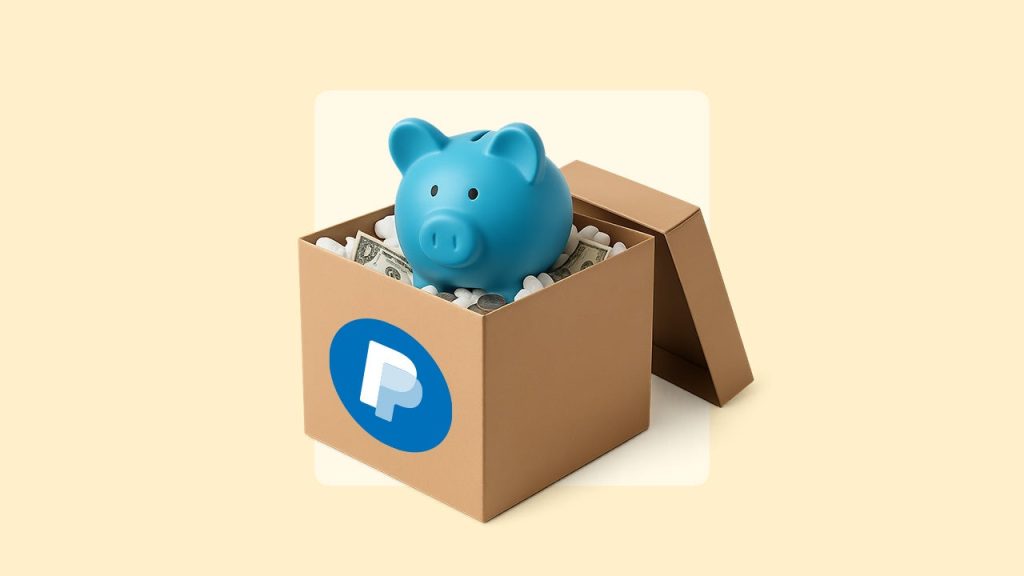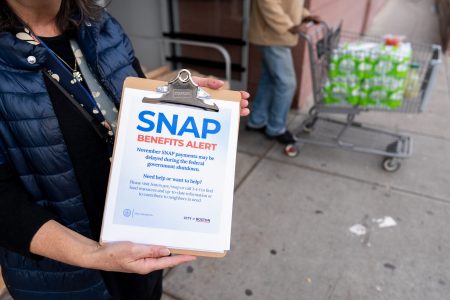Key takeaways
- PayPal can be used like a bank in some ways, with tools for spending, saving and accessing cash — but it’s a fintech company, not a regulated bank.
-
Some PayPal funds are FDIC-insured up to $250,000 through partner banks, though PayPal itself isn’t a bank.
- Most consumers would benefit from using PayPal alongside a traditional bank rather than as a replacement.
PayPal can handle many day-to-day financial tasks, from online shopping to sending money to friends. But replacing your bank account entirely with PayPal isn’t practical for most people.
While PayPal offers debit cards, a savings account and other bank-like services, it’s still a payment processor — not a regulated bank. This means you’ll miss out on essential services like loans, mortgages and the level of customer support that traditional banks provide.,
The best approach for most people is to use PayPal for what it does well — digital payments and online transactions — while keeping a traditional bank account for everything else.
How does PayPal work?
PayPal is a digital payments platform that lets users send, receive and manage money — often serving as a supplemental tool to a bank account.
PayPal is available in more than 200 countries and supports transactions in 25 different currencies. The platform handles three main functions:
-
Online purchases: Major retailers like Target, Walmart, Walgreens let you pay with PayPal when checking out online.
-
Money transfers: You can send money to other PayPal users domestically for free. There is, however, a 5 percent fee for international transactions.
-
Payment requests: You can also request and recieve money from others, whether you’re a freelancer getting paid by clients or splitting a restaurant bill with friends.
Since PayPal isn’t a bank, your funds are held by FDIC-insured partner banks. This means your money has the same federal protection as funds in traditional bank accounts — up to $250,000 per account.
Learn more: What FDIC insurance covers and why it matters.
What banking services PayPal offers
PayPal provides several financial products that work similarly to traditional banking services.
- Debit and prepaid cards: PayPal Debit Card, PayPal Prepaid Card
- Credit cards: PayPal Cashback Mastercard® and one other upcoming credit card.
- Savings accounts: A savings account available with the PayPal Prepaid Mastercard, offering interest.
Better alternatives: Explore Bankrate’s top high-yield savings accounts for potentially better rates.
What PayPal doesn’t offer
While PayPal mimics some aspects of a traditional bank account, several core banking services are absent, including:
-
Lending products: No mortgages, auto loans or personal loans available. If you need to borrow money for major purchases, you’ll need a traditional lender.
-
Investment services: PayPal doesn’t offer investment accounts, retirement planning or other wealth management services.
-
Physical locations: Without branches, you can’t deposit cash, get cashier’s checks or receive in-person help with more complex financial issues.
-
Advanced banking features: Services like wire transfers, notary services and safe deposit boxes aren’t available.
Can PayPal be used as your bank account?
Technically, yes, but you’re probably better off with a traditional financial institution, including banks or credit unions with traditional brick-and-mortar locations or those that are online-only.
Learn more: The best banks and credit unions of 2025.
PayPal offers a small selection of deposit and credit products, including a savings account and a Cashback Mastercard. If you’re unable to open a bank account due to a bad ChexSystems report, PayPal can be helpful.
The company’s prepaid card has a $4.95 monthly fee, which can be a better alternative to paying extra fees for check-cashing services. And, as mentioned above, PayPal debit and prepaid card accounts are indirectly covered by the FDIC, which can provide you some peace of mind.
However, PayPal’s deposit options are limited compared with traditional banks. You won’t be able to consolidate your finances in one place with PayPal, and you won’t have access to many digital banking features that most banks provide.
How to use PayPal effectively with your bank
Most people get the best results using PayPal alongside a traditional bank account rather than choosing one over the other. Here’s how to make it work:
-
Set up your accounts: Link PayPal to a checking account you use for online purchases and digital payments. Keep your primary savings and direct deposit at a traditional bank that offers potentially better rates and more services.
-
Use each for what it does best: PayPal excels at online shopping, peer-to-peer payments and international transactions. Traditional banks handle everything else — loans, high-yield savings, check deposits and in-person services.
-
Take advantage of bonus opportunities: Some credit cards offer extra rewards when you use PayPal for purchases, adding value to transactions you’re already making.
Related reading: How to choose the right bank for your financial goals.
Bottom line
PayPal works well as a digital payment tool, but it can’t fully replace the services most people need from a bank. The platform handles online transactions well, but lacks essential services like loans, competitive savings rates and in-person support.
Ready to optimize your banking strategy? Start by comparing Bankrate’s best checking accounts for your primary banking needs, then explore high-yield savings options to grow your money faster than PayPal’s savings account allows.
For longer-term savings goals, consider today’s best CD rates to lock in guaranteed returns that PayPal can’t match.
FAQs about PayPal
Why we ask for feedback
Your feedback helps us improve our content and services. It takes less than a minute to
complete.
Your responses are anonymous and will only be used for improving our website.
Help us improve our content
Read the full article here









